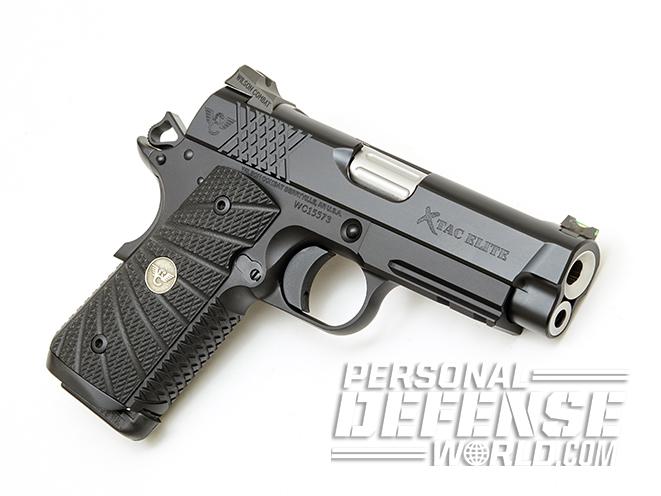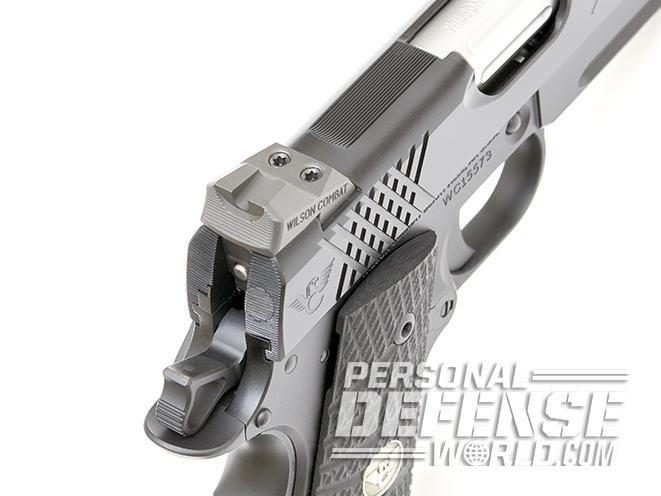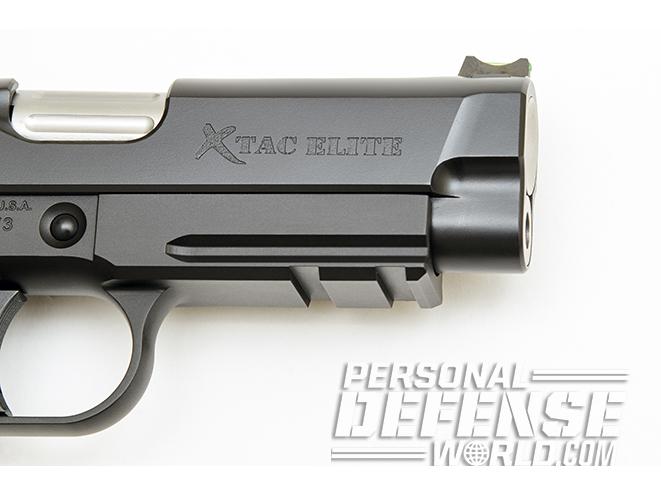Some people search for the Holy Grail, while others are content chasing after Aztec gold. There are even a few convinced that they can track down Bigfoot. But I have spent decades chasing a much more elusive quarry: the ultimate concealed-carry handgun.
When my quest began in the mid-1970s, I thought it would be a quick endeavor since I was a monthly reader of experts such as Bill Jordan, Elmer Keith and “Skeeter” Skelton. Of course Charles Askins had his favorites, and no one could keep Jeff Cooper from offering his opinion. At the same time, life was simple and all you had to really decide was revolver or semi-auto.
At that time, I went through a lot of Smith & Wesson J- and K-Frame revolvers in short order before I settled on carrying a version of the 1911 on a daily basis—the Colt Gold Cup chambered in .45 ACP. The world seemed right for a couple of years before the industry was hit with a rash of semi-automatic “Wonder-Nines” and I was struck down with a bad case of “stupid.” If you ever wondered who bought that nickel-plated Smith & Wesson Model 59, it was me.
Advertisement — Continue Reading Below
I’m not going to bore you with the details on how I transitioned through all three generations of the S&W semi-auto, but for several years at least they kept me immune to the rash of plastic guns that soon followed.
Unfortunately, the real gun writers mentioned are long gone and I have grown older, if not a bit wiser. I have experimented with just about every handgun to hit the market in the past 30 to 40 years, and yes, that finally included those nondescript polymer creations. However, after three months of testing, I may have finally settled on what I consider an excellent choice for concealed carry: the Wilson Combat X-TAC Elite Compact.
Yes, you read right, after 30-plus years I’m right back to the 1911 platform. If you think I have lost it, you must understand that while I was searching, Bill Wilson of Wilson Combat spent his time being more productive. He and his crew at Wilson Combat refined every aspect of the traditional Government Model 1911. My efforts led to a vast drain in my financial status, while his lead to the X-TAC Elite series.
Advertisement — Continue Reading Below
A Work Of Art

Before I go into detail about this pistol, let me just say that a few basic facts may come into play. The single-action, semi-automatic Model 1911 has been with us for well over 100 years. Yet many new shooters may not be totally familiar with its design. After all, I have met some young shooters who have no clue who Roy Rogers is, was or may be. However, this handgun has such an expansive history that it would be comical for me to try and relate it in these pages. To use a modern term, “Google it!”
- RELATED STORY: Xtreme Beauty – Testing the Wilson Combat EDC X9 Pistol
At the same time, just giving you a list of the custom features on this pistol would do you and it an injustice. Every aspect, piece or part of this 1911 has been reviewed, refined and hand-fitted. Wilson Combat is considered a top-tier custom house, and the only time the company is not number one on the list is when someone is going by alphabetical order. I will also point out that the “X-TAC” is not a single pistol, or even a single series of pistols. X-TAC is actually in reference to the tread pattern treatment that replaces the standard serrations, stippling and checkering used on many handguns. There are three different series of Wilson pistols using this pattern: the X-TAC, X-TAC Elite and the X-TAC Elite Compact. The firearm I having been using is from the X-TAC Elite Compact series. Wilson has labeled this handgun as being Compact, but most companies would call this a Commander-sized model. “Commander” was the name created by Colt when the company first shortened the 1911, and it has become the common label for any equal-sized pistol ever since. From this point on, it would be better to relate its custom features as they are noticed on the range rather than transpose them from a website as I sit at my desk. Besides, this method would be a good excuse to spend more time the range, and that is always good.
Sizing Down

My first chore was to gather an ample supply of 9mm rounds. This chambering is nothing new for a 1911, but a lot of shooters consider it to be a sacrilege. The Model 1911 and the .45 ACP were designed hand in hand, and for many years the 9mm round was just that “foreign cartridge.” Real Americans don’t use millimeters!
Advertisement — Continue Reading Below
But in this day and age, the 9mm is now a mainstream option, and the number of weapons chambered in this cartridge far exceeds the .45 ACP. All of us have read the controversy between the 9mm and the .45 ACP. Originally it came down to the higher velocity, lighter weight and smaller diameter of the 9mm against the slower, heavier and larger .45-caliber bullets. Typically, this was described as mass versus speed. When these two cartridges faced off in the early 1900s, most would give the “stopping power” award to the .45 ACP, but that was even before my time. Modern loadings have increased the velocity of both cartridges, and the development of better-expanding bullets has also improved the terminal performance of both. I feel perfectly safe using either one, but I chose to test the X-TAC Elite Compact in 9mm due its lower level of recoil. It is time for me to put on my “big boy” pants and come to grips with the fact that, without constant practice, controlling the .45 ACP just isn’t as easy as it once was for me, and my speed between shots is quicker with the 9mm. Nonetheless, the Wilson X-TAC Elite Compact is available in both chamberings as well as the .38 Super for those who like to be really different.
My first range session with the X-TAC Elite Compact was a mix of experimenting with various loads for functioning and accuracy as well as discovering what makes this pistol different than the standard 1911. The whole concept of malfunctions was soon put out of my mind because, during this session and all that have followed, the pistol has yet to experience a problem.
Wilson Combat states that the X-TAC Elite Compact should be able to produce 1.5-inch groups at 25 yards, and a lot of the credit can go to the finely tuned trigger. There is a smooth take-up of about 0.06 inches before it breaks cleanly at 3.5 pounds. Adding to the accuracy potential is the fit of the fluted, 4-inch barrel. Wilson has chosen to eliminate the typical barrel bushing on this model and instead went with a conical barrel to mate up with the slide. The company has also mastered the fitting of the barrel hood to the slide and sizing the barrel link for a perfect fit. When this handgun goes into battery, the barrel is locked tight. As for the fluting, it may be applied to give any crud a place to migrate without affecting the functioning of the handgun, but like the reversed target crown at the muzzle, it also look really cool.
Advertisement — Continue Reading Below
My accuracy testing consisted of firing five-shot groups at 25 yards using three different brands of what would be considered defensive ammunition. The 124-grain Sig Sauer JHP and 115-grain Hornady Critical Defense FTX loads both proved that Wilson’s accuracy claim was not being boastful. One group with the Sig load even broke the 1-inch barrier, but that was only once. On average, both the Sig and Hornady groups ranged between the 1.50and 1.88 inches. Even Winchester’s standard 147-grain JHP ammunition performed well with groups hovering around 2 inches. To be fair to these companies and to Wilson Combat, please remember my skill (or lack thereof) shows up in these results. Another nice bonus is that the Wilson Combat rear Battlesight and fiber-optic front sight provided a crisp outline to the sight picture and were basically aligned dead-on at 25 yards. The difference in the points of impact between the Sig and Hornady loads wasn’t really enough to notice. The Winchester ammo’s point of impact only varied a couple of inches from the other two.
Running & Gunning

Once I did the typical accuracy and velocity testing, it was time to step away from the shooting bench and use this pistol in the manner for which it was designed. I will freely admit that my “run and gun” testing has evolved over the years to more of a “shuffle and shoot,” but I still find this type of practice useful and enjoyable.
There are a few benefits of searching for the perfect handgun that I forgot to mention. Over the years, you tend to build a sizable collection of holsters and magazine pouches. Finding a few to fit the X-TAC Elite Compact wasn’t a problem, even though this particular handgun sports a carbon-steel frame with an integral Picatinny rail. This is an optional feature on the X-TAC Elite Compact, but one I would highly recommend. If needed after dark, a light would help me see my target and still have both hands on the pistol. This addition did eliminate a few of my holsters, however, and if I wanted to keep the light mounted I would have to get a holster designed for this particular model.
Advertisement — Continue Reading Below
- RELATED STORY: Subcompact 1911 – Shooting the Wilson Combat Sentinel XL
The past couple of months have given me plenty of time to practice on both metal plates and full-sized torso targets set out at different distances and heights. The idea was to draw from a holster and engage each plate with one shot and each torso target with a double-tap without a miss. As long as I could have a clean string, I would then try to add a little more speed. This is when you start to appreciate the X-TAC tread pattern and the traditional 1911 grip frame. The X-TAC tread works better than I expected in that it holds the gun in place without wearing hot spots into your hands. The Wilson Bullet Proof beavertail grip safety and hammer also eliminated any chance of “hammer bite.” These parts, in conjunction with the grip contour right below the triggerguard, allow the pistol to sit low in your hand, decreasing the bore height above the grip. The result is better control over each shot and a rapid return to target.
These speed drills proved that the sights on this gun are just as good away from the shooting bench as they were during the accuracy tests. The width of the U-notch in the rear sight allowed just the right amount of light on both sides of the front sight blade for a quick alignment on target. Several of my range sessions were in bright sunlight, and this is when you see the value of having the rear of the slide, the back of the rear sight and the top of the slide serrated to kill glare. That bright sun also feeds right into the concept behind the fiber-optic front sight. Unlike many handguns, you don’t have to hunt for your front sight to get on target. The same shooting drills also highlighted the value of the heavily beveled Bullet Proof magazine well. Between the sights, gripping surfaces and magazine well, this handgun even made me look good.
X-TAC Elite Compact Confidence

Even after a couple of months of weekly range sessions, I’m still noticing this pistol’s custom-grade features, such as the recessed slide stop, but my confidence in this handgun started growing from day one. I have not mentioned the slide-to-frame fit or the overall finish of this handgun for a simple reason: They’re perfect. Wilson Combat has taken no shortcuts in handcrafting this pistol, and it shows both on and off the range.
Advertisement — Continue Reading Below
However, the bottom line for any weapon used for protection is your faith in it. Put aside all of the hype, pretty designs and fancy grips. You have to know that your handgun will fire and function 100 percent of the time. It takes practice to build that kind of confidence in any weapon system, and after decades of searching for the ideal handgun, I’m absolutely ready to put my faith in Wilson Combat and the 9mm X-TAC Elite Compact. Can I get an “Amen!” from the choir?
Caliber: 9mm
Barrel: 4 inches
Advertisement — Continue Reading Below
OA Length: 7.6 inches
Weight: 38.4 ounces (empty)
Grips: G10 Starburst
Advertisement — Continue Reading Below
Sights: Fiber-optic front, Battlesight rear
Action: SA
Finish: Armor-Tuff
Capacity: 8+1
Price: N/A
For more information, visit wilsoncombat.com




































